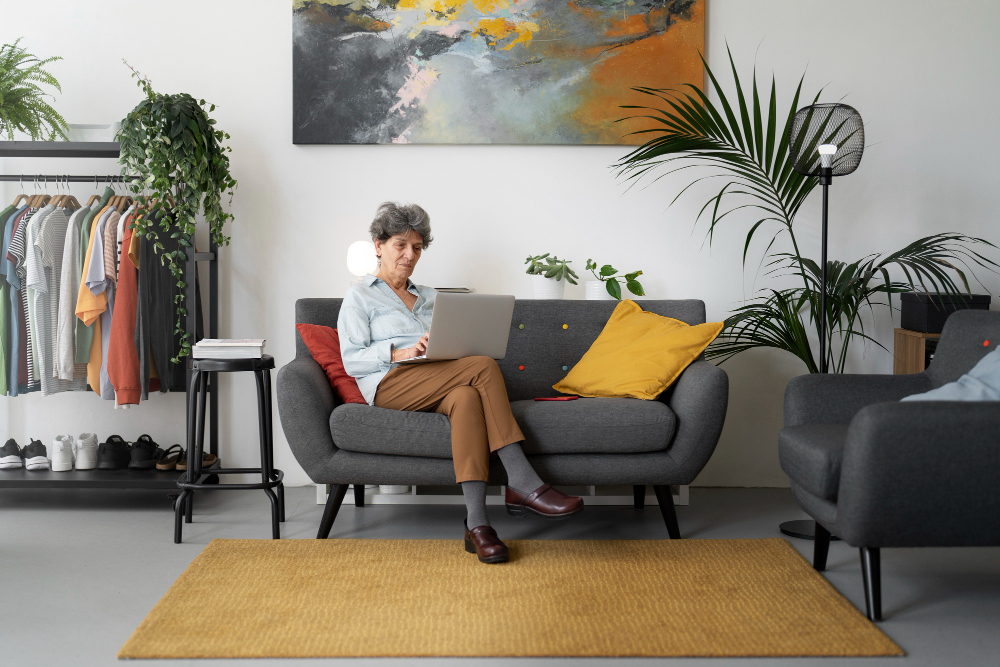

Open-concept living is a hallmark of modern apartments, offering a sense of spaciousness and light. But this popular layout can also present a challenge: how do you create distinct functional zones without walls? A large, open room can feel chaotic if your living, dining, and work areas all blend into one another. The good news is that you don't need to build walls to create separation. With a few strategic design choices, you can artfully define different areas, making your home feel both organized and inviting.
This guide will walk you through creative ways to use common household items like rugs, screens, and shelving to carve out dedicated zones within your open-concept apartment. These techniques will not only improve the functionality of your space but also add layers of style and personality. Whether you're settling into one of the beautiful apartments for rent in Wilson, NC, or just looking to refresh your current layout, these tips will help you master the art of space definition.
One of the simplest and most effective ways to create visual separation in an open floor plan is with area rugs. A well-placed rug acts as a visual anchor, clearly marking the boundaries of a specific zone, like a living room or dining area.
Size Matters: The biggest mistake people make is choosing a rug that's too small. For a living area, the rug should be large enough so that at least the front legs of all your furniture pieces (sofa, chairs, coffee table) are on it. This creates a cohesive, grounded look. In a dining area, the rug should extend at least 24 inches beyond all sides of the table, allowing chairs to be pulled out without catching on the edge.
Color and Pattern: Use color and pattern to set the mood for each zone. You might choose a plush, neutral rug for a cozy living room nook to promote relaxation. For a dining area, a rug with a subtle pattern can add a touch of elegance and help hide inevitable spills. If you have multiple rugs in one large space, ensure their color palettes complement each other to maintain a harmonious flow. A good strategy is to pick rugs that share at least one common color.
Placing a rug is more than just unrolling it on the floor. Think of it as drawing a floor plan. The edges of the rug define the perimeter of your "room." For example, aligning a rectangular rug with your sofa establishes the living area. Placing a circular rug under a round dining table and chairs instantly designates that spot for meals. This simple act of placement gives your furniture a sense of purpose and place, transforming a floating arrangement into a defined, intentional zone. For those exploring new apartments for rent in Wilson, NC, envisioning rug placement can be a great way to plan your layout before you even move in.
Room dividers and screens are fantastic tools for creating a sense of privacy and separation without permanently altering your space. They come in a wide variety of styles, from traditional folding screens to modern, sculptural panels, making it easy to find one that fits your decor.
Folding Screens: These are classic and versatile. A beautiful folding screen can be used to hide a workspace at the end of the day or to shield a reading corner from the main living area. They are lightweight, easy to move, and can be folded up and stored when not needed. Look for screens made from materials like carved wood, fabric, or even woven rattan to add texture to your space.
Hanging Dividers: For a more modern and airy feel, consider hanging dividers. These can be anything from beaded curtains and macrame panels to laser-cut acrylic screens. They create a visual barrier without completely blocking light or sightlines, maintaining the open feel of the apartment while still suggesting a division of space.
The key to using room dividers effectively is to place them where they can create a logical separation. A common use is to place a screen behind a sofa to separate the living area from a home office or dining space. You can also use a divider to create a formal entryway or foyer if your apartment opens directly into the living room. This not only defines the space but also provides a welcoming transition into your home.
Bookshelves and other open-shelving units are workhorses in an open-concept apartment. They function as both storage and a semi-transparent wall, dividing a room while offering display space for books, plants, and decor.
Open-Back Bookshelves: An open-back (or backless) shelving unit is ideal for dividing a space because it allows light to pass through and maintains a sense of openness. It creates a clear boundary without making the room feel smaller or closed off. Etagere-style shelves, with their light frames and open sides, are another excellent choice.
Cube Storage: Modular cube shelving is incredibly versatile. You can configure it to the exact height and width you need and arrange the cubes to create a staggered, asymmetrical look. This allows you to control how much you want to block the view between spaces.
When using a bookshelf as a room divider, you don’t need to fill every shelf to the brim.
Using shelving this way is particularly useful for separating a living area from a bedroom in a studio apartment or carving out a dedicated home office. It’s a practical solution that adds character and much-needed storage, a frequent challenge in many apartments for rent.
Defining spaces in an open-concept layout is about creating visual cues that guide the eye and signal a change in function. By strategically using rugs to ground your zones, screens to create soft partitions, and shelving to build functional dividers, you can transform a single large room into a multi-functional, well-designed home. These methods offer flexibility, allowing you to adapt your space as your needs change.
If you’re currently searching for the perfect canvas for your design ideas, consider exploring the modern and spacious apartments for rent in Wilson, NC. The open layouts are perfect for applying these creative decorating tips.
Ready to find your new home? If you're looking for apartments for rent in Wilson, NC, contact Oasis at Heritage today to schedule a personal tour.